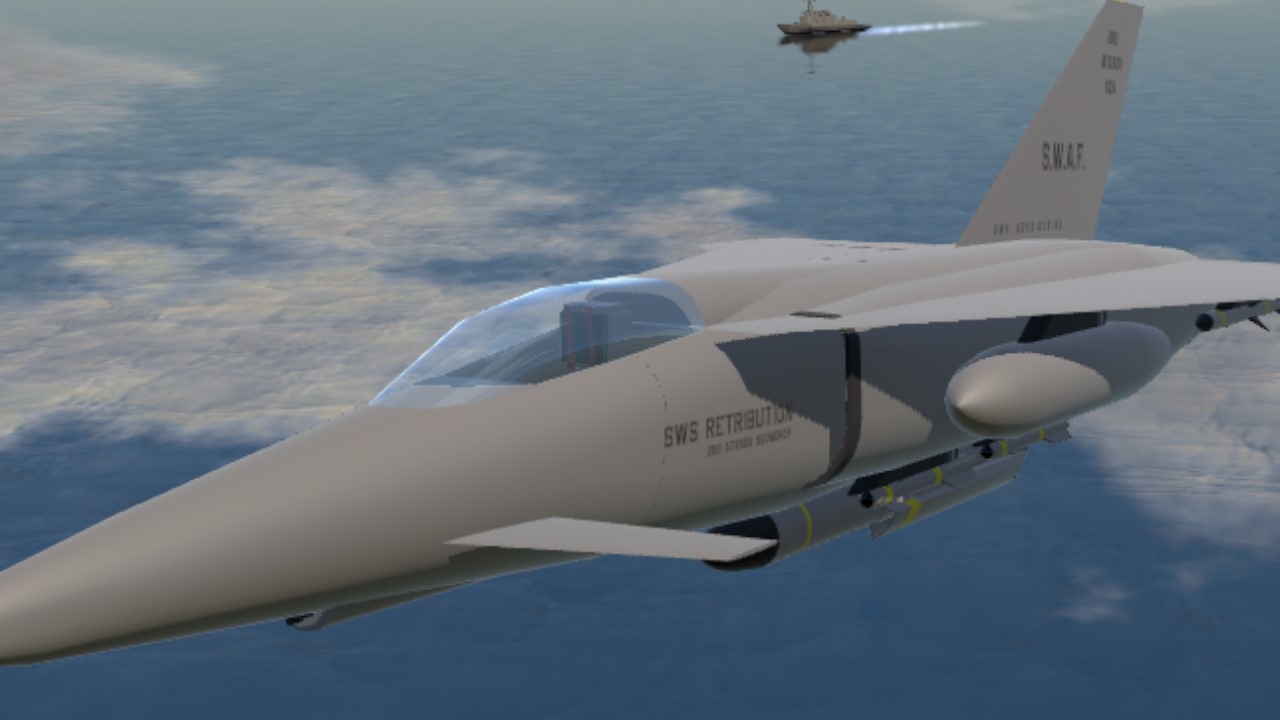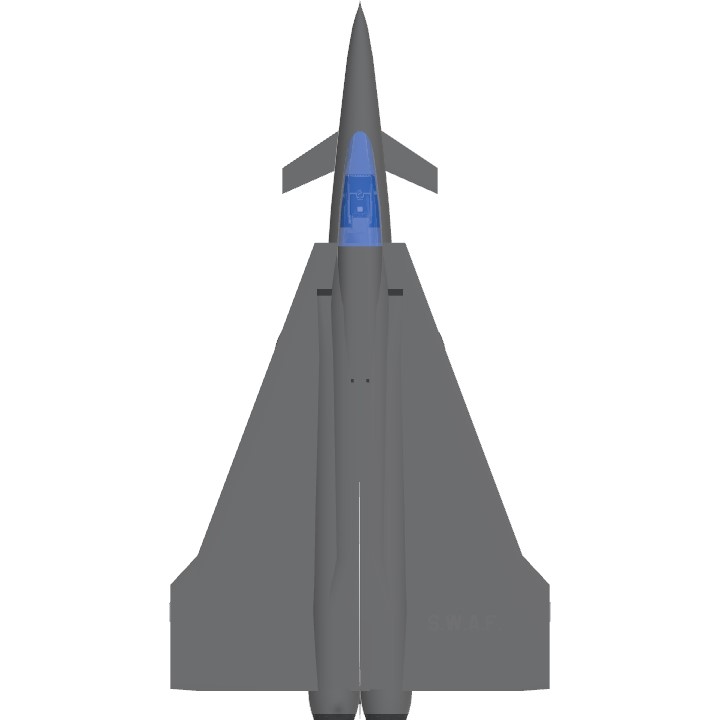


Lore:
The F-112 Gyrfalcon was an early strike aircraft of the Saltwater Air Force, in service during the tenure of the First Iteration under John C. Wilcox. The licence for its manufacture was purchased from the United States some twenty years after production ceased, with the design deemed outdated and flawed by the USAF, however the aircraft was the most that the world's nations were willing to sell the fledging Saltwater in its early days. Forty modernised airframes were eventually produced for the SWAF under the project name of "Destroyer", produced by SMC Aerospace, and formed the first full fighter squadron of the Saltwater Air Force.

Although plagued throughout its service by substandard handling characteristics and flawed control software, the aircraft nonetheless gave sterling service, entering action for the first time during the Algorithm assault on the Saltee fleet during operations in the Diamond Archipelago off the US western seaboard. Over the course of the ensuing conflicts, a total of five F-112s were shot down by anti-aircraft and surface-to-air missile fire, with casualties significantly reduced upon the revision of SWAF tactics away from their emphasis on low-level operations towards mid-level stand-off strike.

Throughout their twenty-year service for the Saltwater Air Force, the Saltee-produced Gyrfalcons gained a reputation for durability, taking damage that would have downed many aircraft. Such feats included surviving a direct hit by a Halcyon attack drone, with the aircraft managing to limp home on a single engine with the UAV embedded in the fuselage.

Intended primarily for strike operations, the aircraft had five hardpoints under the fuselage for weapons carriage, with another two on each wing, allowing for a significant payload of munitions and stores, often to a degree that neared the physical limits of the airframe, with SWAF pilots required to handle the aircraft increasingly delicately as they aged.

Unlike the domestically-produced Dark Arrow, the F-112 was swiftly retired following the fall of the First Iteration, with the aircraft increasingly outdated when compared to newer fourth and fifth-generation aircraft then coming online. Three airframes remained operational and were occasionally flown by the SWAF Heritage Flight following their formal retirement, however only one survives to the present day, stored at an air museum in Souda Bay.











Controls:
AG1 - Release drop tanks
AG2 - Dump munitions
AG3 - Arm guns
AG4 - Activate formation lights
AG6 - Lower arrestor hook
AG7 - Deploy landing chute
For best handling, use mouse or joystick
Specifications
General Characteristics
- Created On Windows
- Wingspan 24.0ft (7.3m)
- Length 45.3ft (13.8m)
- Height 16.1ft (4.9m)
- Empty Weight 21,656lbs (9,823kg)
- Loaded Weight 32,273lbs (14,639kg)
Performance
- Power/Weight Ratio 2.088
- Wing Loading 94.3lbs/ft2 (460.6kg/m2)
- Wing Area 342.1ft2 (31.8m2)
- Drag Points 4211
Parts
- Number of Parts 127
- Control Surfaces 5
- Performance Cost 724







my honest reaction:
i was thinking it had folding wings
Stop crossbreeding jets.
Did they consent to this?
flying pencl